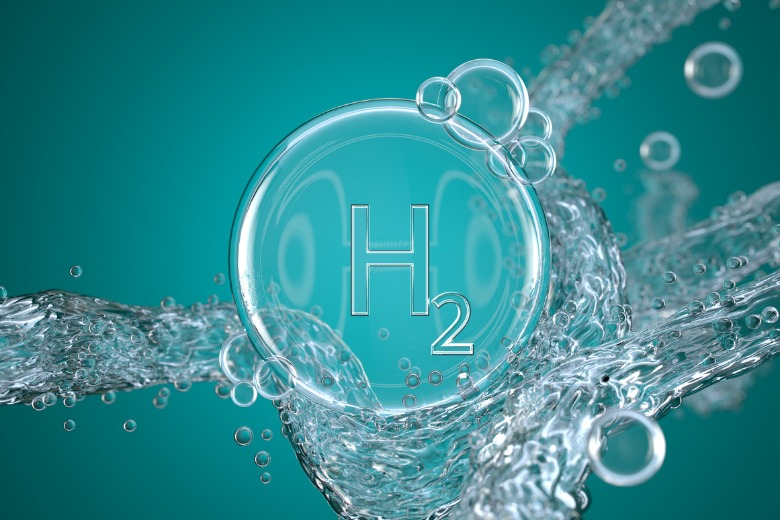
To help tackle the challenges of climate change, there is an increasing demand for Australia to invest in and develop renewable energy and low carbon power options, including green hydrogen, writes Lana Van Wyk.

Green hydrogen is the way of the future. For hydrogen to be considered clean energy, it needs to be produced without creating any emissions. The cleanest form of hydrogen is green hydrogen. When renewable energy, such as solar, wind and biomass, is used to power the electrolyser, it produces emissions-free hydrogen, which is classified as green hydrogen. Green hydrogen has significant economic benefits for Australia with its potential to be widely used for transport, power supply and a range of industrial processes.
This year, the Australian Government lodged an updated Nationally Determined Contribution (NDC) with the United Nations Framework Convention on Climate Change, as part of Australia’s obligations under the Paris Agreement. Under the updated NDC, Australia is committed to reducing greenhouse gas emissions by 43 per cent below 2005 levels by 2030 and reaffirms Australia’s commitment to net zero emissions by 2050. I am currently working with a range of industry stakeholders to find ways to help businesses and government bodies reach these net-zero 2050 commitments.
Identifying opportunities
The Green Hydrogen Consortium, which I am a member of, is a group formed by four business – Hatch, Anglo American, BHP and Fortescue – to collectively find ways to use green hydrogen across global operations and projects, as well as drive the uptake of hydrogen technologies in the mining industry. The Consortium ultimately aims to help eliminate the challenges in adopting green hydrogen technologies and identify opportunities to develop green technologies for the resources sector.
I am also a team member at national research centre HILT CRC. The organisation collaborates with companies and industry leaders to reduce emissions in the heavy industry, which are responsible for producing materials such as steel and cement. Hatch is one such partner of the organisation. HILT CRC will enable our heavy industry sector to compete in the low-carbon global economy for carbon-neutral materials. The centre has committed to investing $22 million in new renewable electricity infrastructure research projects to produce the green hydrogen for iron making.
Challenges
The partnerships formed within these industry groups is crucial to addressing the many challenges which exist with implementing green hydrogen. One of the greatest challenges and reasons why hydrogen has not yet been widely implemented in Australia is the cost. While the cost of production is decreasing, it is still not on par with fossil fuels. There are also limited technologies which use hydrogen fuel, thus there is not a high demand for it. Further, the use of grid energy to power the electrolysers to create hydrogen can be considered counterproductive.
While green hydrogen is emissions-free, one of the challenges raised across stakeholders and agencies is the large amount of water needed. Water requirements for hydrogen production will vary depending on the production method and technology used, and the need for additional water for indirect production requirements such as cooling. Australia will need to consider how to balance green hydrogen’s demand with other water priorities through effective stakeholder engagement with local, State, and Federal water operators. There are also opportunities for government agencies and policy makers to increase water supply through increasing recycling and desalination infrastructure.
Opportunities
Despite these challenges, one major advantage Australia has in the green energy market over other countries is the availability of space. Australia has abundant land available to develop solar and wind farms meaning there is significant potential for Australia to be a global leader in green hydrogen.
The success of green hydrogen in Australia ultimately comes down to our Federal, State, and local governments. All levels of governments have a responsibility to help support the process of introducing cleaner energy options and improving Australia’s global footprint. The Federal Government, along with State and Territory governments, are currently planning for a National Hydrogen Industry. The development of new infrastructure and upgrades to existing infrastructure, including gas networks, water networks, roads and rail will all contribute to the feasibility of a future led by green hydrogen.
One of the most critical responsibilities of policy makers in their role as leaders is community engagement. Providing opportunities for local communities to have their say at the early stages of hydrogen project development is critical in understanding the varying differences in the way economies, infrastructure and communities operate across Australia. Building relationships with key stakeholders such as developers, landholders, residents, businesses, conservation groups and Indigenous leaders, will ensure meaningful and sustainable long-term outcomes for communities. This will create stronger awareness and education on the methods and benefits behind green hydrogen, and in turn increase employment and training prospects within the green hydrogen industry for future generations.
Lana Van Wyk is Brisbane Principal with Hatch Advisory
Comment below to have your say on this story.
If you have a news story or tip-off, get in touch at editorial@governmentnews.com.au.
Sign up to the Government News newsletter